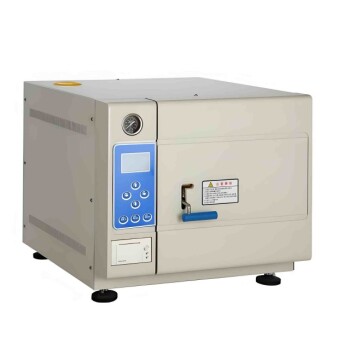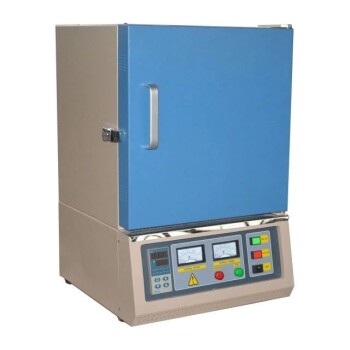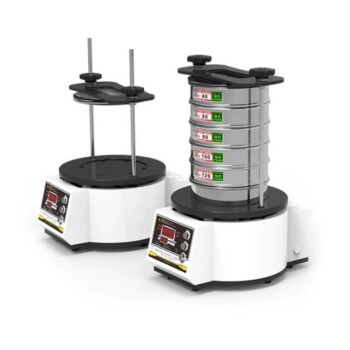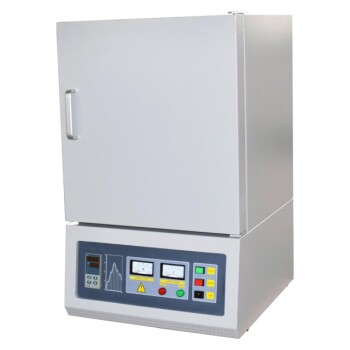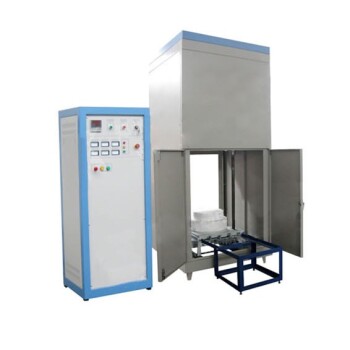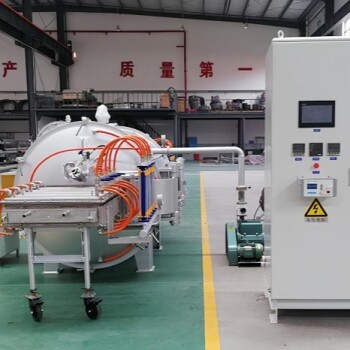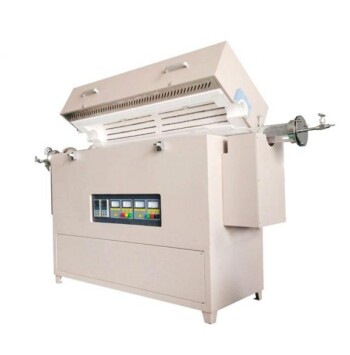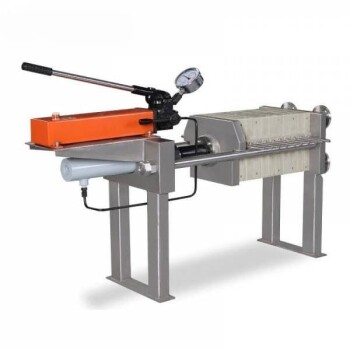In scientific research, freeze drying is the gold standard for sample preservation. This process, also known as lyophilization, involves freezing a material and then removing the water by turning the ice directly into vapor under a vacuum. By avoiding the liquid phase, freeze drying locks a sample in a state of suspended animation, ensuring its biological and chemical structures remain unaltered for accurate, long-term analysis.
The core value of freeze drying in science is not just preservation, but the quality of that preservation. It protects the delicate integrity of a sample, which is the absolute foundation for producing reliable, reproducible, and valid research findings.
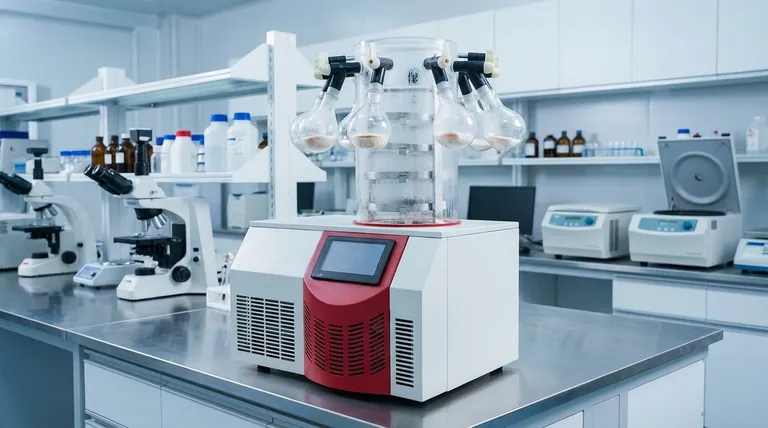
The Core Principle: Preservation Without Destruction
Freeze drying is fundamentally a gentle dehydration technique. Its success hinges on a physical phenomenon that protects the very things that other drying methods would destroy.
What is Lyophilization?
The process involves three main steps. First, the sample is frozen solid, typically at very low temperatures. Second, a deep vacuum is applied, causing the frozen water to sublimate—meaning it turns directly from solid ice into water vapor. Finally, a gentle warming phase removes any remaining unfrozen water molecules.
Why Sublimation is Key
Standard drying methods use heat to evaporate water. This heat can be catastrophic for sensitive biological materials, causing proteins to denature, cells to rupture, and chemical bonds to break.
Sublimation, by contrast, happens at low temperatures and bypasses the destructive liquid water phase entirely. The rigid, frozen structure of the sample acts as a scaffold, holding molecules in their original positions as the water vapor escapes, thus preventing structural collapse.
The End Result: A Stable, Unaltered Sample
The final product is a dry, porous "cake" that is lightweight and shelf-stable for years, even at room temperature. More importantly, it is chemically and biologically almost identical to the original sample. Just add a sterile solvent, and the material is reconstituted for analysis as if it were freshly prepared.
The Impact on Research Integrity
The ability to maintain a sample's original state has profound implications for the quality of scientific work.
Ensuring Sample Stability
By removing water, freeze drying effectively halts most biological and chemical activity. This prevents the degradation that would otherwise occur over time, even in a conventional freezer. For long-term studies, this stability is non-negotiable.
Guaranteeing Reproducibility
A cornerstone of the scientific method is reproducibility. When researchers across different labs can work with samples that are identically preserved, it removes a major variable from their experiments. Freeze drying ensures that the starting material is consistent, making results more comparable and trustworthy.
Enabling Advanced Analyses
Many modern analytical techniques require samples to be in a specific state. Freeze drying can be used to prepare materials for a wide range of applications, from creating a qualified precursor for nanomaterials like graphene to preserving tissues for later microscopic examination without the artifacts caused by chemical fixatives.
Understanding the Trade-offs
While powerful, lyophilization is not a universal solution. It involves specific considerations and is not always the best choice.
High Initial Cost
Laboratory-grade freeze dryers are complex machines involving robust refrigeration and vacuum systems. They represent a significant capital investment compared to standard ovens or freezers.
Slow and Energy-Intensive Process
Freeze drying is not a fast method. Depending on the sample size and type, a single cycle can take many hours or even several days to complete. The combination of deep freezing and high vacuum also consumes a considerable amount of energy.
Not a Perfect Process
While gentle, the freezing step can still damage certain ultra-delicate structures, like some complex cells, if ice crystals are allowed to grow too large. Optimizing the freezing rate and using cryoprotectants are often necessary to mitigate this risk.
Making the Right Choice for Your Application
Deciding to use freeze drying depends entirely on the nature of your sample and the goals of your research.
- If your primary focus is the long-term stability of biologicals: Freeze drying is essential to prevent the degradation of sensitive vaccines, enzymes, proteins, or microorganisms.
- If your primary focus is creating a high-quality material precursor: Lyophilization is an excellent method for producing a uniform, porous structure for advanced materials that is superior to what heat-drying can achieve.
- If your primary focus is simple, short-term storage of robust samples: Standard freezing may be sufficient and is far more cost-effective, provided your sample is not sensitive to ice crystal formation or degradation.
Ultimately, freeze drying is a powerful enabling technology that safeguards the very foundation of an experiment: the integrity of the sample itself.
Summary Table:
| Aspect | Benefit of Freeze Drying |
|---|---|
| Preservation | Maintains original biological/chemical structure |
| Stability | Enables long-term, room-temperature storage |
| Reproducibility | Provides consistent starting material for experiments |
| Analysis | Prepares samples for advanced techniques (e.g., nanomaterials) |
Ensure the integrity of your research with a freeze dryer from KINTEK.
Your samples are the foundation of your work. Protect your investment in time and resources with equipment designed for reliable, gentle preservation. KINTEK specializes in lab equipment and consumables, serving the precise needs of research laboratories.
Contact our experts today to find the perfect freeze drying solution for your application—from sensitive biologicals to advanced material precursors.
Visual Guide

Related Products
- Benchtop Laboratory Freeze Dryer for Lab Use
- Laboratory Sterilizer Lab Autoclave Vertical Pressure Steam Sterilizer for Liquid Crystal Display Automatic Type
- Desktop Fast Laboratory Autoclave Sterilizer 35L 50L 90L for Lab Use
- Lab-Scale Vacuum Induction Melting Furnace
- 1400℃ Muffle Oven Furnace for Laboratory
People Also Ask
- What role do laboratory freeze dryers play in the food industry? Unlock Superior Food Preservation
- Why is freeze drying considered more effective than ordinary drying? Preserve Structure, Nutrients & Flavor
- What types of liquid samples can be processed using a laboratory freeze dryer? Preserve Your Sensitive Materials
- Why are laboratory freeze dryers considered economical tools? Maximize Value and Minimize Loss
- What are the main steps involved in the freeze-drying process? A Guide to the 3 Key Stages


